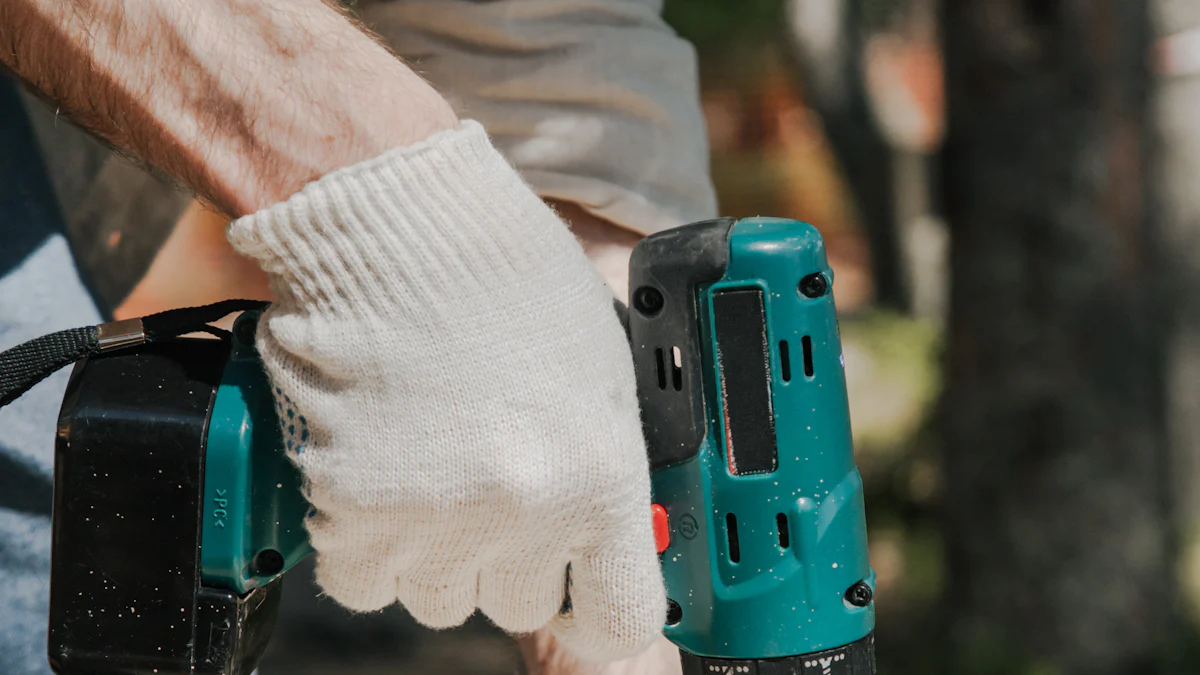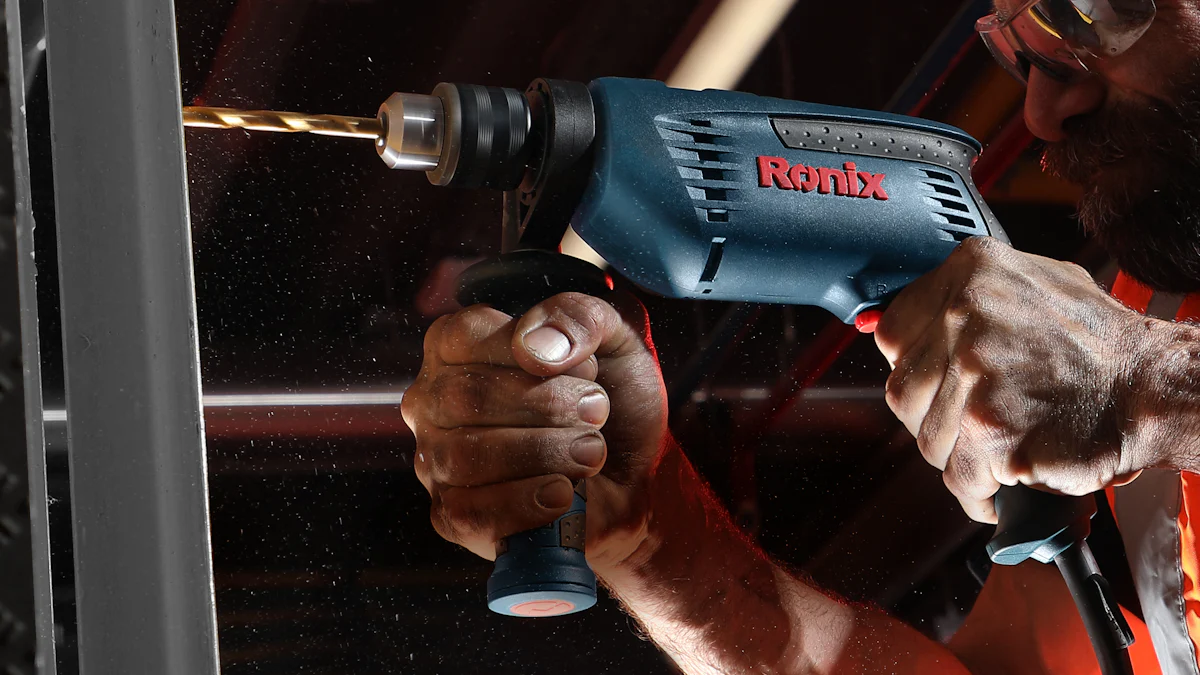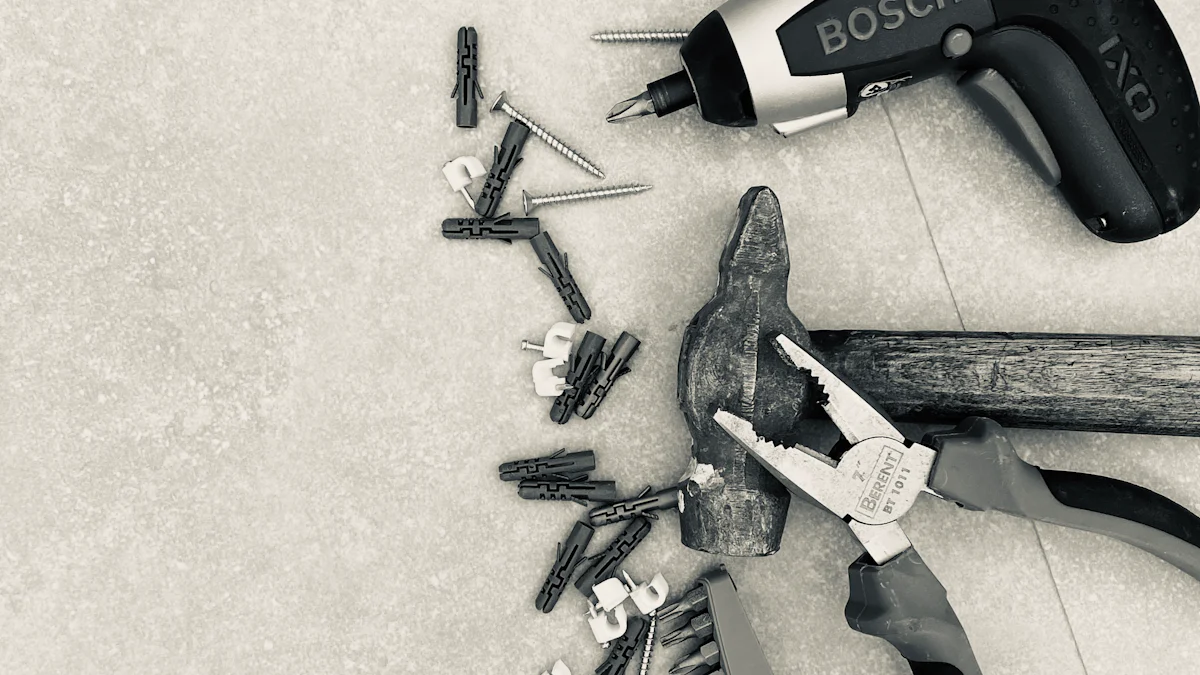
Bosch drills offer reliable performance and durability. Versatile tools save time and money. Using a Bosch drill as a screwdriver enhances efficiency. The Bosch screwdriver function simplifies tasks and reduces the need for multiple tools.
Understanding Your Bosch Drill

Key Features
Speed Settings
Bosch drills come with variable speed settings. The Bosch cordless drill/driver offers two-speed options. This feature allows you to choose the appropriate speed for different tasks. Lower speeds work well for driving screws. Higher speeds are ideal for drilling holes.
Torque Control
Torque control is crucial when using a drill as a screwdriver. The Bosch cordless drill/driver has 20 clutch settings. These settings help you adjust the torque to match the screw size and material. Proper torque prevents overdriving screws and damaging surfaces.
Chuck Types
Bosch drills feature different chuck types. The Bosch cordless drill/driver has a ½-inch keyless chuck. This chuck is compatible with hex-shanked and round-shanked bits. Keyless chucks allow quick and easy bit changes. Always ensure the bit is securely fastened before use.
Safety Precautions
Personal Protective Equipment (PPE)
Always wear personal protective equipment (PPE) when using a Bosch drill. PPE includes safety glasses, gloves, and ear protection. Safety glasses protect your eyes from debris. Gloves provide a better grip and protect your hands. Ear protection reduces noise exposure.
Safe Handling Practices
Safe handling practices are essential for preventing accidents. Always read the user manual before operating the drill. Keep your work area clean and well-lit. Secure the material you are working on to prevent movement. Avoid wearing loose clothing or jewelry that could get caught in the drill. Always turn off and unplug the drill when changing bits or making adjustments.
Preparing Your Bosch Screwdriver
Selecting the Right Bit
Types of Screwdriver Bits
Choosing the correct bit ensures efficient work. Bosch screwdriver bits come in various types. Phillips, flathead, and Torx are common options. Each type fits specific screw heads. Using the wrong bit can strip screws and damage surfaces. Bosch screwdriver bit sets include heat-treated bits. These bits feature a tapered torsion zone. This design enhances durability and performance.
How to Attach the Bit
Attaching the bit to your Bosch screwdriver is simple. First, ensure the drill is off and unplugged. Open the chuck by rotating it counterclockwise. Insert the bit into the chuck. Tighten the chuck by rotating it clockwise. Make sure the bit is secure before use. A loose bit can slip and cause injury.
Adjusting Settings
Setting the Torque
Proper torque settings prevent overdriving screws. Bosch screwdrivers have adjustable clutch settings. Select a lower setting for small screws and soft materials. Use higher settings for larger screws and hard materials. Test the torque on scrap material first. Adjust as needed to avoid damaging the workpiece.
Choosing the Right Speed
Speed settings affect screw driving efficiency. Bosch screwdrivers offer variable speed options. Lower speeds work best for driving screws. Higher speeds suit drilling tasks. Select the appropriate speed for your project. Start with a low speed and increase if necessary. This approach ensures control and precision.
Step-by-Step Guide to Using the Bosch Screwdriver

Inserting the Screw
Positioning the Screw
Place the screw at the desired location on the material. Hold the screw in place with one hand. Ensure the screw stands straight to avoid misalignment. Misaligned screws can damage the material and reduce stability.
Starting the Drill
Turn on the Bosch screwdriver. Set the drill to a low speed setting. Align the bit with the screw head. Apply gentle pressure to keep the bit in place. Squeeze the trigger slowly to start driving the screw. Increase the speed gradually to maintain control.
Driving the Screw
Applying Steady Pressure
Maintain steady pressure on the Bosch screwdriver. Avoid pushing too hard to prevent stripping the screw. Let the tool do the work. Keep a firm grip on the handle for stability. Consistent pressure ensures smooth and efficient screw driving.
Monitoring Depth
Watch the depth of the screw as you drive it in. Stop periodically to check the progress. Adjust the torque setting if necessary. Higher torque settings drive screws deeper. Lower settings prevent overdriving and surface damage. Stop when the screw head is flush with the material.
Removing the Screw
Reversing the Drill
Set the Bosch screwdriver to reverse mode. This setting allows you to remove screws easily. Align the bit with the screw head. Apply gentle pressure to keep the bit in place. Squeeze the trigger slowly to start extracting the screw.
Extracting the Screw
Maintain steady pressure while reversing the drill. Let the Bosch screwdriver do the work. Avoid pulling on the screw to prevent damage. Continue until the screw is fully removed. Turn off the drill once the screw is out.
“Great tool. Small and perfect for the job. Bosch always make great drills and this is no exception.”
Troubleshooting Common Issues
Stripped Screws
Causes
Stripped screws occur due to several reasons. Using the wrong bit size can strip the screw head. Applying too much pressure can also cause stripping. Worn or damaged bits contribute to this issue as well.
Solutions
Fixing stripped screws requires specific steps. First, stop using the drill immediately. Switch to a manual screwdriver for better control. Use a rubber band between the bit and the screw head for extra grip. For severely stripped screws, employ a screw extractor tool.
Drill Overheating
Causes
Drill overheating happens for various reasons. Continuous use without breaks leads to overheating. Using the drill at high speeds for extended periods also causes this issue. Poor ventilation around the motor contributes to overheating as well.
Solutions
Preventing drill overheating involves several actions. Take regular breaks during prolonged use. Operate the drill at appropriate speeds for each task. Ensure proper ventilation around the motor. Clean the drill’s vents to allow better airflow. If overheating persists, consult the user manual or contact Bosch customer support.
Understanding your Bosch drill’s features and settings enhances efficiency. Practice regularly to gain confidence and improve skills. Follow these final tips for effective use:
- Always select the correct bit for each screw type.
- Adjust torque and speed settings based on the task.
- Maintain steady pressure and monitor screw depth.
Bosch drills offer reliability and versatility. These tools simplify tasks and reduce the need for multiple devices. Regular maintenance ensures long-lasting performance.
